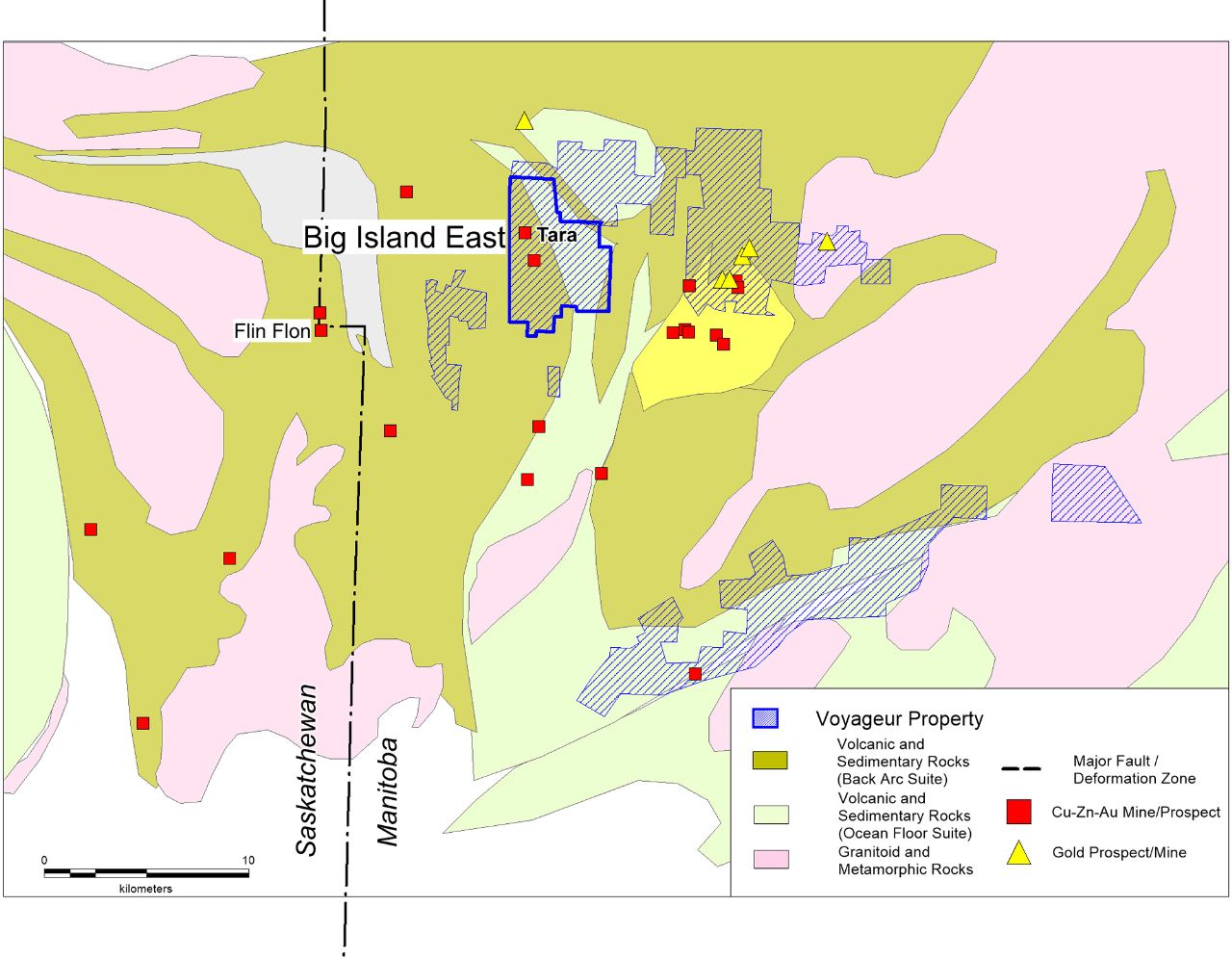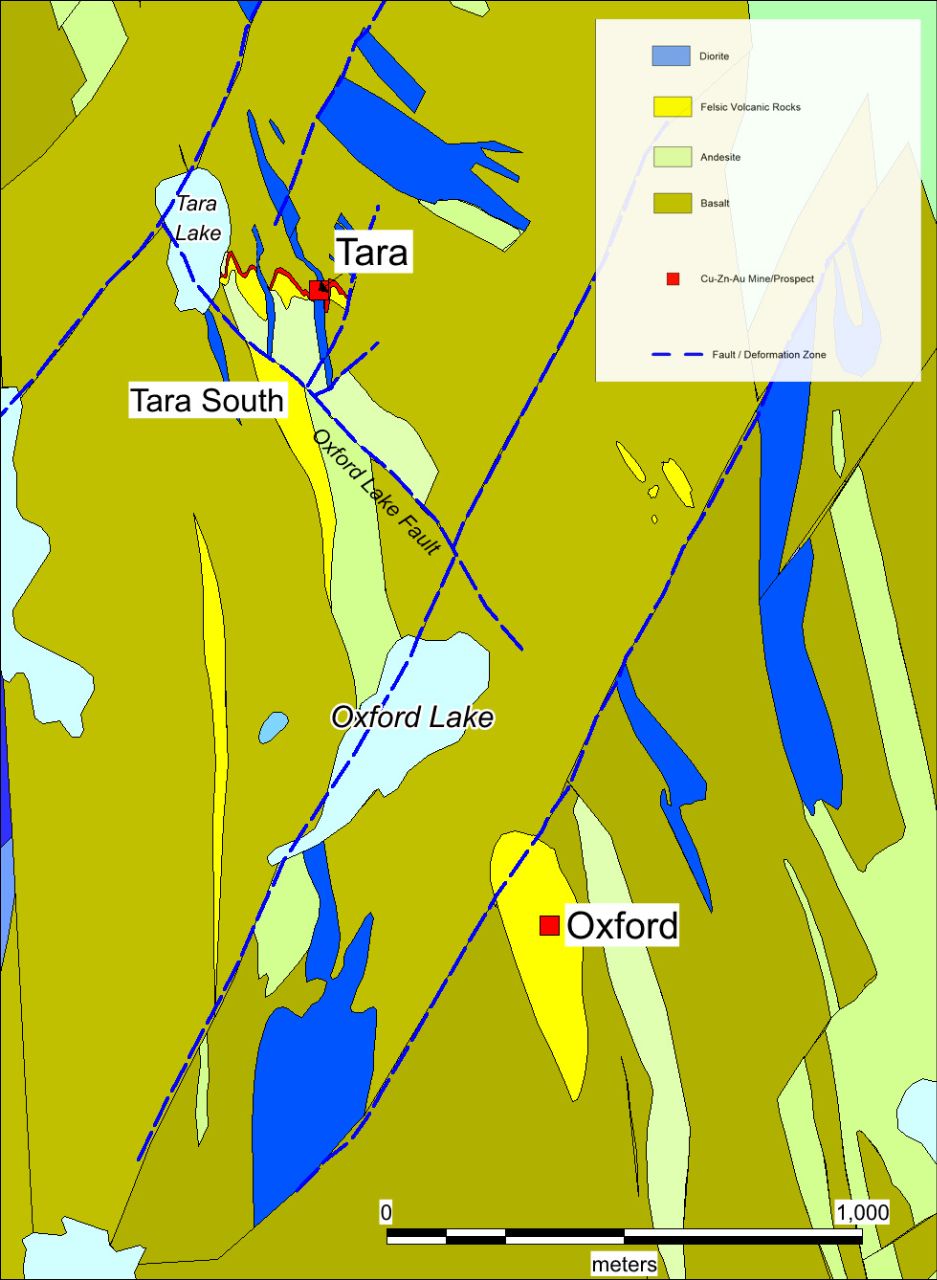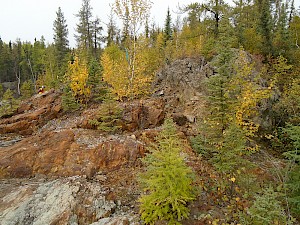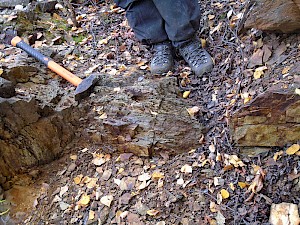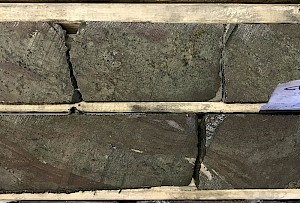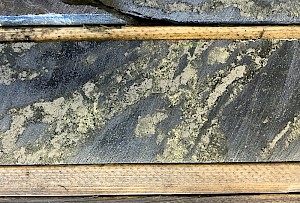Projects
The Big Island properties are spatially sub-divided into East and West contiguous claim blocks. Both blocks cover volcanic rock sequences equivalent to those hosting Cu-Zn-Au mineralization at the Flin Flon and Triple 7 Mines. Volcanic rock-hosted massive sulphide mineralization occurs within the Big Island East block of claims and have been the focus of recent Voyageur exploration.
Current Work
The Cu-Zn-Au Tara Prospect in the eastern claim block was explored extensively between 1987-1988, but more recent work has shown that potential for further Cu-Zn-Au mineralization remains high. Mineralization occurs at surface and exploration drilling for down plunge extensions has not been completed below 150 metres. Bedrock mapping has shown the orientation of the mineralization has been complicated by tight folding, such that previous drilling did not properly test for down-plunge extensions. In light of this structural interpretation, nearby airborne EM anomalies also require future follow-up.
In March 2020, Voyageur completed five diamond drill holes for a total of 1,081 metres. One hole tested below the outcrop exposure of the original discovery to characterize the mineralization and the host rocks to improve exploration targeting methods for future work (drill core from the previous programs was not available). Assay results from this hole demonstrates the high grade, Zn-rich nature of mineralization comparable to the upper and distal portions of the Flin Flon orebodies.
Table of Drilling Highlights from Tara
| HOLE-ID | From (m) | To (m) | Width (m) | Cu (%) | Zn (%) | Au (g/t) | Ag (g/t) | Stratigraphy |
|---|---|---|---|---|---|---|---|---|
| TZ20-071 | 57.0 | 77.9 | 20.9 | 0.77 | 17.18 | 4.40 | 109.2 | Tara Main |
| including | 61.5 | 68.5 | 7.0 | 1.45 | 19.58 | 4.86 | 178.0 | |
| TZ20-071 | 40.6 | 46.6 | 6.0 | 1.16 | 0.68 | 0.85 | 34.6 | Tara FW |
| Historic Drill Holes2 | ||||||||
| TZ-413-88-16 | 54.1 | 63.5 | 9.6 | 0.78 | 10.45 | 2.82 | 46.8 | Tara Main |
| including | 54.1 | 56.6 | 2.7 | 1.95 | 22.70 | 6.36 | 100.0 | |
| TZ-413-88-16 | 108.8 | 113.3 | 4.5 | 0.75 | 1.36 | 0.52 | 14.4 | Distal |
| TZ-413-88-16 | 228.9 | 232.5 | 3.6 | 0.12 | 0.32 | 0.41 | 3.5 | Distal |
| TZ-413-88-39 | 141.9 | 152.9 | 11.0 | 0.04 | 0.92 | 0.07 | 3.6 | Distal |
| TZ-413-87-10 | 142.0 | 148.0 | 7.0 | 0.13 | 0.91 | 0.11 | 2.8 | Tara South |
1. See press release dated April 20, 2020;.
2. Historic drill holes from Manitoba Assessment reports – data and collar location not validated by Voyageur.
Geological Setting and Prospectivity
Massive sulphide mineralization is exposed at the Tara Prospect within felsic volcanic host rocks (Figure 1). Mineralization is particularly Zn-rich and is also particularly Au-rich with the highest Au-grade returned from the historic drilling program near the exposures grading 46.9 g/t Au along with 180 g/t Ag, 6.34% Zn and 1.29% Cu over 0.45 metres. The massive sulphide and associated stringer zone is reasonably thick and is over 10 metres true thickness in places.
Figure 1. Bedrock geology map of the Tara-Oxford area.
The host felsic volcanic rocks and surrounding mafic volcanic rocks are variably altered and disseminated Zn-Ag-Au mineralization associated with pyrite is dispersed over a wide area (see outcrop photos). In addition to the exposures at the Main Tara showing similarly altered and weakly mineralized felsic volcanic rocks are found in outcrop 300 metres to the south (Tara South) that are interpreted as a fault offset equivalent along the Oxford Lake Fault. Alternatively, these rocks to the south maybe a folded repetition of the host sequence considering the nature of deformation at the Tara Prospect exposures. Thickening of the felsic volcanic rock sequence along the Oxford Lake Fault and toward Tara Lake may suggest this structure is syn-volcanic and the centre of mineralization occurs at depth near the fault.
Outcrop photos. Left photo: exposures of massive sulphide mineralization and altered felsic volcanics at the Main Tara showing (looking west). Right photo: altered and rusty coloured pyrite mineralization in felsic volcanic rocks at Tara South.
The felsic volcanic host rocks are dacitic to rhyolitic in composition; geochemically similar to the Flin Flon deposit host rocks. The volcanic rocks within the Big Island properties are within a separate fault block to the Flin Flon deposits, but the time-stratigraphic levels where the Tara and Oxford mineralization occur maybe equivalent (Figure 2).
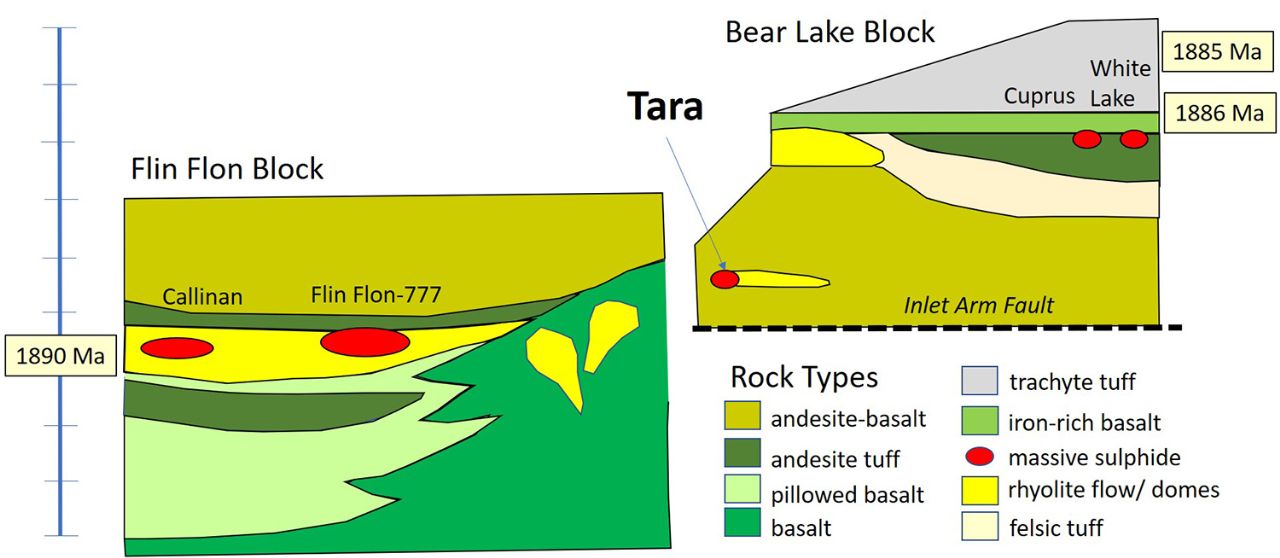
Figure 2. Schematic cross-sections through the Flin Flon and Bear Lake structural blocks showing the stratigraphic position of massive sulphide mineralization. Published age dates of individual units are highlighted in yellow (after Syme and Bailes, 1993; Galley et al., 2009).
Voyageur’s 2020 drilling revealed the Tara Prosect mineralization and wallrock alteration is similar to that found at the Flin Flon deposits and throughout the belt where deformation can be complicated. The footwall alteration to mineralization exposed at surface and intersected by drilling is intense consisting of chlorite and sericite (see drill core photos).
Drill core photos from 2020 Voyageur drilling. Left photo: massive sphalerite and pyrite. Right photo: chalcopyrite-pyrite stringers in intensely chlorite-sericite alteration of the host felsic volcanic rocks.
Altered and weakly mineralized felsic volcanic rocks also occur further south of Oxford Lake where previous sporadic drilling has intersected Zn mineralization (Figure 1). Airborne electro-magnetic conductors have been identified near Oxford Lake in a survey flown by Voyageur across the entire area that may not have been well tested by the previous diamond drilling programs.
Future Work
An extensive review of all drilling and down-hole geophysical data was completed and compiled within a 3D geological model used to plan and design follow-up drill holes expected to be completed in 2021. Concurrent with the 2021 drilling program, a borehole geophysical survey of historic drill holes has been designed to generate additional targets for drill follow-up. Airborne EM data over the felsic volcanic rocks at Oxford will be reviewed to potentially generate new targets to test in this program. The 2021 program is designed to complete 2,000-2,500 metres of exploration drilling.
The exposures at Tara Prospect reveal locally well-developed folding that has not been recognized elsewhere since most mapping in the Bear Lake structural block has been at a regional scale. As such, the outlook for additional Cu-Zn-Au-Ag mineralization within the Big Island East Properties remains encouraging. Surface mapping and prospecting will be conducted further north and south along the trend of felsic volcanic rocks hosting mineralization.


